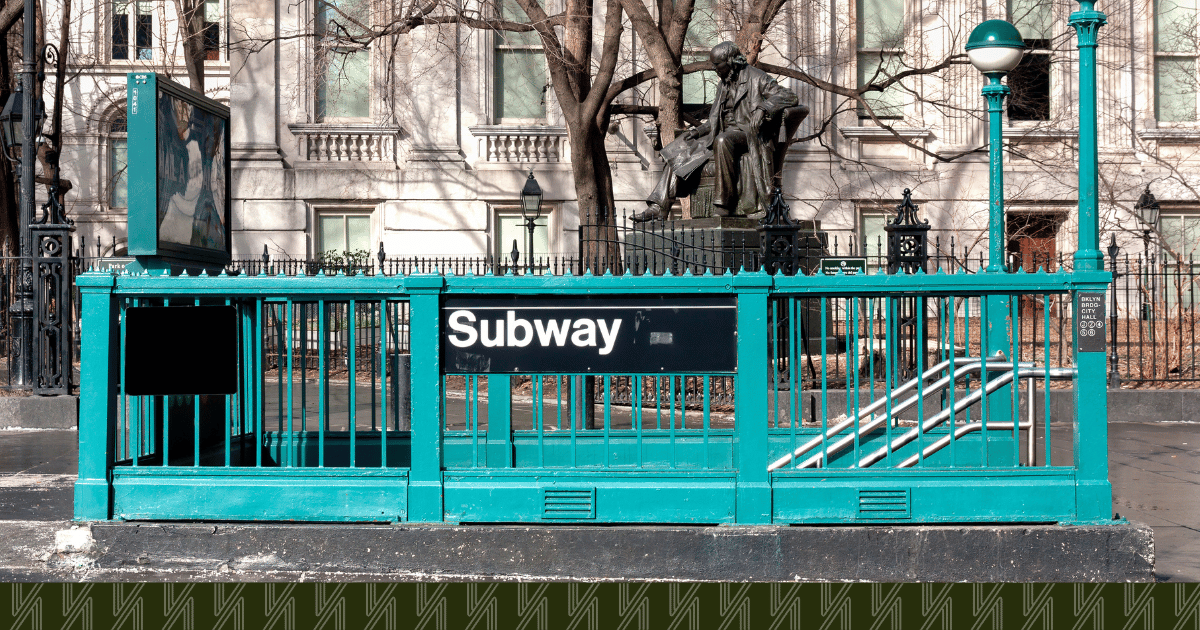Ask anyone who lives in Queens, and they’ll tell you—the subway is a lifeline.
It’s how we get to work, meet up with friends, catch a show in Manhattan, or drop the kids off near grandma’s. For many buyers, being near a subway stop feels like hitting the jackpot. And in most cases, it is. Homes near public transit often hold their value better, rent faster, and make everyday life more convenient.
But not all subway-adjacent homes are created equal. As someone who’s helped countless families buy and sell in neighborhoods like Astoria, Jackson Heights, and Forest Hills, I’ve learned that there are a few key things you need to think about before signing on the dotted line.
So let’s talk about what to watch for—beyond just walking distance.
1. Close Is Great. Too Close? Maybe Not.
We all love a short walk to the train. But if the front of your building faces the elevated 7 train or your backyard hums with the rumble of the F line… well, that charm wears off fast.
Pro tip: Walk the route from the home to the nearest station—yourself. Is it well-lit? Safe? Does it feel like a commute you’ll enjoy doing daily? Being one or two blocks away can often be the sweet spot: convenience without the noise right outside your window.
2. How Loud Is It, Really?
Noise is a deal-breaker for a lot of people—and I totally get it. I’ve had clients walk into a gorgeous home and walk right back out the second they hear the train roll by.
Visit the property at different times of day, especially during rush hour or late at night. Open the windows. Stand still. Listen. If the train runs 24/7 on that line (hello, N and Q), make sure that’s something you can live with.
3. What’s the Neighborhood Feel After Dark?
The subway brings foot traffic, and that’s not a bad thing. It can mean livelier streets, more small businesses, and better lighting. But every station has its own personality—some feel buzzy and active, others… a little less comfortable after sunset.
Do this: Walk the area at night. Talk to neighbors. Get a feel for the block, not just the address.
4. Property Value and Resale Power
There’s a reason so many people look for homes near transit—they tend to hold their value. A lot of my buyers in Queens are first-time homeowners, and they’re thinking long-term: “If I need to sell in five years, will this still be a good investment?”
The answer? Usually yes—if the location is well-connected, clean, and not right on top of a noisy hub. Look at recent sales on the block and how they’ve appreciated. It’ll tell you a lot.
5. How Does It Fit Your Commute?
Not all train lines are created equal.
The E and F are your express superstars. The R? Slower, more local vibes.
Before you fall in love with a home, map out your daily route. Will you need to transfer? How long will it take door to door? This kind of info isn’t just practical—it’s peace of mind for your future self.
6. Air Quality and Foot Traffic
Busy train stations can sometimes bring more than just noise—they bring people, cars, buses… and pollution. If you or someone in your family has asthma or allergies, this could be something to think about.
Homes on quieter side streets or slightly set back from major avenues tend to offer a better buffer.
7. Got a Car? Get the Parking Facts
Here’s the unfiltered truth: parking near subway stations in Queens can be a headache.
Many commuters from outside the neighborhood park nearby and hop on the train, especially near express stops.
Look for homes with driveways, garages, or at least some form of permitted street parking. Ask current residents what parking is really like at 7 p.m. on a Tuesday.
8. What Else Is Nearby?
Yes, you want the train. But you also want groceries, coffee, maybe a great Thai spot around the corner. A good subway stop is only part of the lifestyle.
Look at what’s within a 10-minute walk. Is there a park? A pharmacy? A great school if you’ve got kids?
This kind of access adds value—both financial and personal.
9. Feel the Vibes (and the Vibrations)
If you’re considering an older home near an elevated track, ask this:
Do you feel the rumble in the floors when the train passes? It happens in some older buildings.
Check for hairline cracks or signs of foundation wear. And always ask your inspector to pay special attention to structural integrity.
10. What’s Coming Next?
This is where working with a local agent (👋 that’s me) makes a big difference.
Zoning changes, development projects, and MTA upgrades can have a huge impact on your property’s future value—or your quality of life.
Is a new station going in nearby? A new condo building about to break ground? These things matter more than you might think. Let’s talk about what’s on the horizon in your target neighborhood.
Bottom Line: The Train Is a Perk—But It’s Only Part of the Picture
Living near the subway in Queens can be a game-changer.
But it’s not just about distance—it’s about lifestyle, comfort, value, and how the whole puzzle fits together.
If you’re looking for a home near the train—or you’re thinking about listing yours and want to highlight the transit benefits—I’ve got the insights, the experience, and the neighborhood know-how to guide you.
Let’s find the home that moves with you, not just gets you where you’re going.

